Mayotte
Destination - Indian OceanSince March 2011, Mayotte has been the 101st French ‘département'... But this island is above all a destination which is unique in the world, through its huge, superb lagoon.
Logbook
Imagine: a 1,400km² lagoon, with a double coral reef, an area which is sometimes very wide, giving you the impression of being at sea, sometimes very close to land. This lagoon is also very deep, and has become a real sanctuary for a number of marine species. Mayotte is therefore a paradise for humpback whales, dolphins and turtles, and you will not forget your cruising in this genuine Garden of Eden for a long time.
Nestling at the extreme north of the Mozambique Channel, between the east coast of Africa and Madagascar, Mayotte is situated between the equator and the tropic of Capricorn. It is made up of two islands, Grande Terre and Petite Terre, as well as about thirty small islands, with a low, eroded relief. 200,000 inhabitants live on Mayotte, on a 376 km² territory, situated 1,500 km from La Reunion and 8,000 km from Paris.
Mayotte is a former volcano which came out of the Indian Ocean. In the north of Petite Terre, the Dziani Dzaha (volcano lake) bears witness to this geological past. It is a volcanic crater, which is today occupied by an emerald green lake with sulphurous waters. The archipelago is protected from the easterly trade wind current by the island of Madagascar, and benefits from a tropical maritime climate, with two seasons: dry and temperate from May to October (average of 24°C), the southern winter, and a hot season or ‘rainy season' from November to April (average of 27°C), the southern summer. Note that the water in the lagoon never drops below 24°C...
A real paradise for naturalists, off the beaten tracks and away from mass tourism, Mayotte has preserved its natural environment. Lush flora with exotic scents: baobabs, flamboyants, giant bamboos, African tulip trees, takamakas or tropical almond trees live in the wet and dry forests from the north to the south of Grande Terre.
About fifty species of orchids can also be found there, the most well-known of which is the vanilla. Around these forests, the inhabitants have cultivated ilang-ilang, cloves, cinnamon, nutmeg or pepper, which, through their diversity and quality, have made the island (which for a long time was nicknamed the perfume island) famous.
The mangrove, essential to the lagoon's ecosystem and very present in Mayotte, represents an exceptional, protected heritage. Covering 750 hectares, it acts as a natural water filter and offers a peaceful area for the numerous species of bird to nest and protection for the young of 70% of the lagoon's fish. The richness of Mayotte's endemic fauna is also extraordinary: lemurids and fruit-eating lemurs squabble over pawpaws with the flying foxes, bats with a wing span of nearly a metre.
Itinerary
Although this destination is a paradise, there is no local cruising catamaran charter company (yet). And, as has often been the case over the past 25 years, it was our friends from Sail Explorer (Hobie Cat Aventure) who discovered the spot. The idea therefore, is to offer completely self-sufficient raids on its sport catamarans, to discover a unique and really original destination.
Two raids are being offered, from this summer:
A classic formula in 9 days, including 6 days' sailing and a free day, and a XL formula over 12 days, including 8 days' sailing and 3 free days, to get to know the interior of the island.
After the arrival at Mayotte airport and the transfer to the Sail Explorer base at Mtsanga beach, situated in the south-west of the island, you settle into the base camp, a genuine ‘African style' lodge (safari tents, and furniture, with access to showers and toilets) in the middle of a coconut plantation from your dreams. Things get off to a good start...
The catamaran raid is on Hobie Cat 18s or 16s, equipped with a spinnaker and double trapezes. A following boat transports your luggage in the dry from bivouac to bivouac, so that your only concern is to enjoy the sailing... As we are talking about sailing, note that the raid requires you to be able to handle a catamaran or dinghy on all points of sailing in a moderate breeze. But beginners can be accommodated, if they register with an experienced helm. Good physical fitness is necessary (and sufficient) to enjoy the safari to the full. Finally, and obviously, you must be able to swim...
The raid itself consists of a circuit of Mayotte via the lagoon; the weather dictates the direction.
The big moments of your adventure:
- Cruise to Hagnoundrou bay and visit to the waterfall at Soulou (12 miles).
- Excursion to Mont Choungi, which dominates the ‘Ile-Grande', stage to the Saziley reserve, observation of turtles laying eggs (12 miles).
- Passing via the small island of Bambo, situated in the middle of the big lagoon, cruise around the small island of Brandelé and observation of whales and dolphins (15 miles).
- Long, 27-mile stage to reach the island of Mtsamboro...
- The final stage allows you to go round the north of Grande Terre, for a complete circuit, passing in front of Petite Terre, then a downwind sail towards the small island of Sable Blanc, and return to the base... (20 to 25 miles).
And for those of you who want to prolong their discovery of Mayotte, you can stay in the lodge and organise diving in the lagoon (S-shaped pass), flights over the island in a microlight, and days in the forest with a naturalist guide.
Practical info
Getting there:
Direct flights from Paris with CorsairFly, via La Reunion with Air Austral, via Madagascar with Air Madagascar and Kenya Airways via Nairobi. The direct flight takes about 10 hours.
Weather:
Mayotte offers an ideal climate for sailing: regular trade winds, reaching a maximum of twenty knots, a dry, warm climate in summer, with temperatures not exceeding 27°C, and all this bathed by a warm ocean and protected by a huge coral reef... Did we mention that this is paradise?
In concrete terms, the dry season is from May to October (average of 24°C) and the wetter hot season, from November to April.
Formalities:
It is a French ‘département'... Valid passports for European citizens.
Health recommendations
No vaccination is required. But having up to date vaccinations is nevertheless more reasonable (hepatitis A and B, tetanus, polio, typhoid). Even though cases of malaria are very rare, you should protect yourself from mosquitoes...
Money:
The currency is the euro. Bank cards are accepted more and more and there are 35 (!) cash dispensers...
Destinations offered by
View all the destinations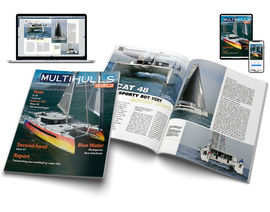
 Discover the 2025 winners!
Discover the 2025 winners! 
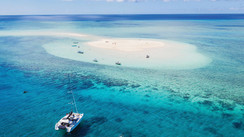
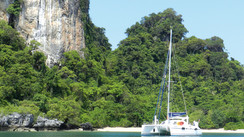
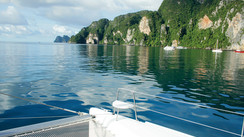
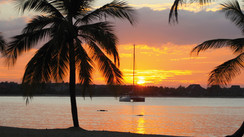
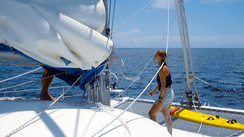
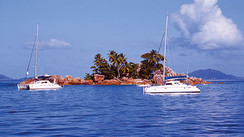





What readers think
Post a comment
No comments to show.